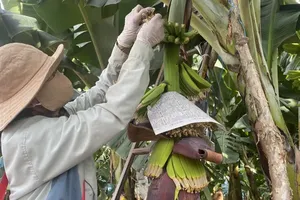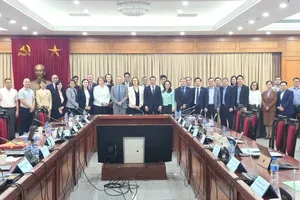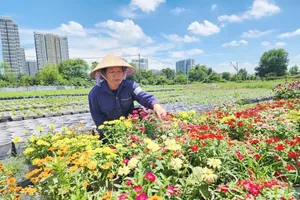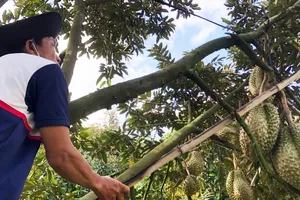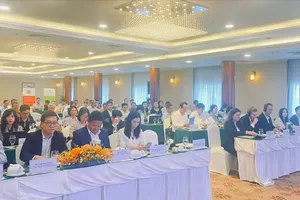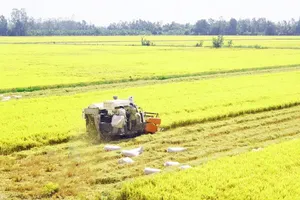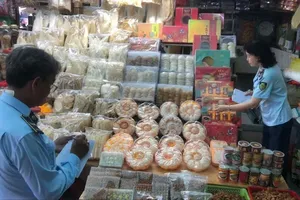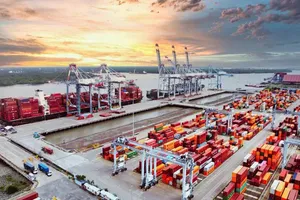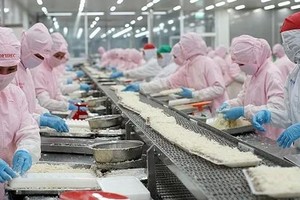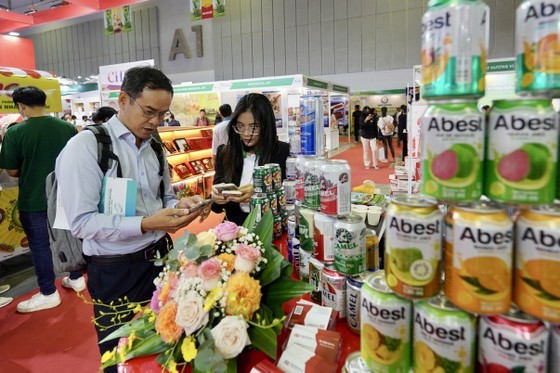 |
| Vietnamese enterprises seek opportunity at the expo |
Statistically, over 10,000 groups of goods from agricultural products, spices, sauces, beverages to seafood, and processed foods were displayed at the exhibition by enterprises from many countries such as Russia, India, Korea, Indonesia, and Thailand to seek sourcing from domestic enterprises.
General Director of PT Menara Pangan Desa Group Richardo Petricius Utoyo said that the company specializes in the production of dried fruit and according to the company's market survey, Vietnam has an abundant and diverse supply of seasonal fruits. More importantly, Vietnamese fruits have sweetness, flavor, aroma and quality close to the global clean agricultural practice standards. Therefore, this will be a stable source of raw materials for the company, said Mr. Richardo Petricius Utoyo.
India has the largest number of enterprises participating in the exhibition with nearly 300 booths. Indian enterprises were looking for spices and flavorings from Vietnamese suppliers.
According to many Indian businesses, this country imports US$5 million of Vietnamese-grown pepper every year on average. Moreover, Vietnam is the main country supplying India with spices with special aromas, many kinds of vegetable spices such as cinnamon, anise, cardamom, and many other inorganic and organic spices such as fish sauce, salt, and fermented spices including vinegar.
However, the disruption of the global logistics chain in the past two years has caused many Indian enterprises to face difficulties due to the interruption of supply from Vietnam. Therefore, with the solution to connect trade directly through this exhibition, Indian entrepreneurs wanted to seek and sign import contracts directly from Vietnamese enterprises, limiting the impact on production activities.
According to a report by the world's leading market research organization Mordor Intelligence Inc, Vietnam's food and beverage industry will achieve a compound annual growth rate of up to 8.65 percent between 2021 through 2026. Particularly in Ho Chi Minh City, from the beginning of 2023 up to now, the food processing industry has affirmed its pivotal role as one of the four key industries maintaining a growth rate of more than 7 percent, accounting for 13.78 percent of the industry’s production value, contributing 13.69 percent of the added value of the industry.
China, the United States and Japan maintain three major markets
According to the Ministry of Agriculture and Rural Development’s statistics, the total export turnover of agricultural products is estimated at US$29.13 billion in the first 7 months of 2023, down 9.1 percent over the same period while export turnover of agricultural products alone reached nearly $14.99 billion up 13.2 percent. Currently, China, the United States and Japan continue to be the three largest export markets for Vietnam's agricultural products.
Speaking at the exhibition, Vice Chairman of Ho Chi Minh City People's Committee Vo Van Hoan emphasized that businesses, trade and diplomatic organizations of many countries registered to participate in the event proving that trade connectivity has demonstrated the importance of Vietnamese food globally. However, consumers refer to high-quality food products that are beneficial to consumers' health; therefore, businesses are required to constantly innovate to supply more suitable food products. Therefore, trade connections will create opportunities for domestic and foreign enterprises to clearly identify their needs; thereby, promoting linkages and increasing market share development opportunities.
According to Vice Chairman Vo Van Hoan, the city has been supporting investment for businesses in the industry to move towards refining and applying new and advanced technologies to produce high-quality products with a focus on development in depth with modern technology, creating high-quality products of great added value. Many projects of investing in equipment lines, and applying automation technology in production, have produced many diversified, quality and affordable products.
The HCMC Vice Chairman noted that businesses should approach new technology trends in the industry, discover innovative products, advanced technologies, and new approaches in the production, processing and packaging of food and beverage products as well as have relationships and cooperation with international enterprises, manufacturers and distributors, contributing to the expansion of the global link chain in the coming time.

